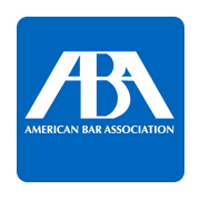Committee OKs proposal to tighten ABA bar pass standards; some members hope more will be done

The requirements for bar passage rates for ABA-accredited law schools need tightening, an ABA committee has found, and committee members suggested the passage percentage requirement may be too low.
Standard 316 holds that accredited law schools are not in compliance if within five years fewer than 75 percent of first-time test-takers do not pass bar exams or the schools are not within 15 points of state bar passage rates. But the ABA Accreditation Standards Review Committee approved a proposal Saturday to change the requirement so that schools must show that 75 percent of their graduating classes pass a bar exam within two years.
The proposal, which the committee approved unanimously, was forwarded to the governing council of the ABA Section of Legal Education and Admissions to the Bar, which will consider it in October.
Committee member Ward Farnsworth, dean of the University of Texas School of Law, suggested that the 75 percent requirement was too low.
“I think we’re hearing from a number of members of the committee that they’d prefer to go higher [on the passage percentage], but they understand we’re hearing many concerns,” committee member Scott Pagel, an associate dean at George Washington University Law School, said at the meeting, which took place in Chicago.
At an August hearing about the proposal, committee members heard the public’s comments (PDF), with concerns mostly centered on whether it would harm law schools that serve disadvantaged populations or are in states with low bar passage rates. A representative from the National Black Law Students Association spoke, stating that out of 64 law schools that recently were not in compliance with Standard 316, more than 20 had student populations with more than 30 percent diversity.
Committee member Craig M. Boise, dean of Syracuse University College of Law, mentioned the diversity concern during the Sept 10 meeting.
“I find it insulting that we’re having to accept a lower pass rate for students of color … it’s a great disservice,” he said. According to Syracuse Law’s website, 25 percent of the class of 2019 are people of color. Its bar exam pass rate for first-time test takers was 83 percent in July 2015.
Denise Roy, co-president of the Society of American Law Teachers’ board of governors, attended the meeting as an observer, and she felt the committee spent little time considering public comments
“We are concerned and disappointed that the committee’s discussion did not reflect thoughtful consideration of the concerns expressed by constituents about the effect of the change on students and communities served by schools, such as law schools at historically black colleges and universities, that seek to provide access to the profession to those who are disadvantaged by reliance on timed, standardized tests as the means of gaining a license to practice law; of the significant variation among states on the difficulty of passing the bar, or of the fact that the bar exam is an inadequate assessment of skills required to provide effective legal representation,” Roy, a professor at Mitchell Hamline School of Law in St. Paul, Minnesota, told the ABA Journal in an email.
The committee also submitted a proposed interpretation of Standard 501-3, dealing with student attrition. The proposal states that if a specific class has an attrition rate of more than 20 percent, the school would be required to demonstrate that its admission policies are consistent with the standard requirements.
“I was shocked when I looked at attrition rates in excess of 20 percent,” said Peter A. Joy, professor and director of the criminal justice clinic at Washington University School of Law in St. Louis. “It’s hard to imagine a school has a sound admissions policy when students are doing that.”



